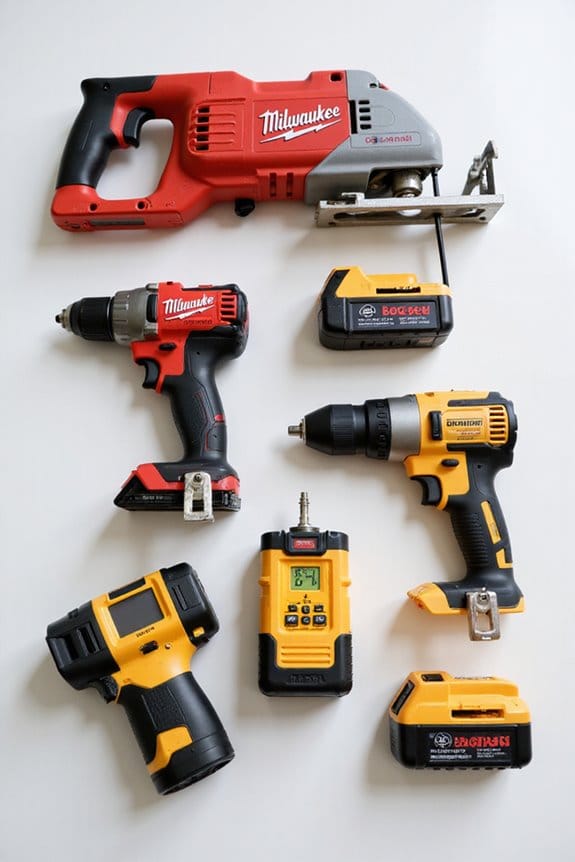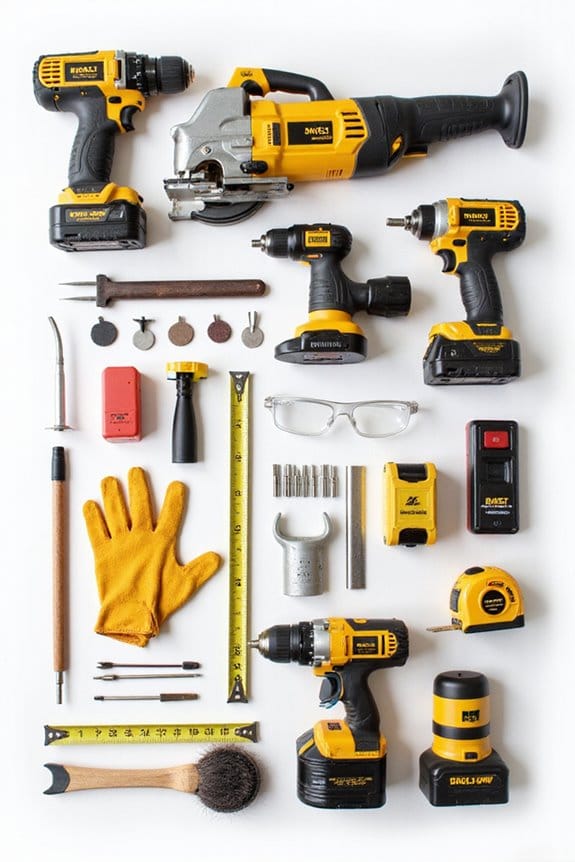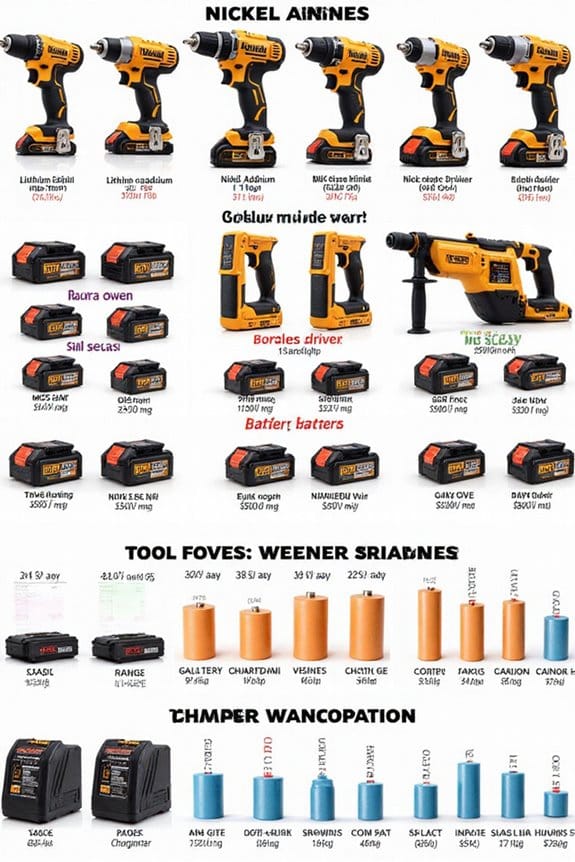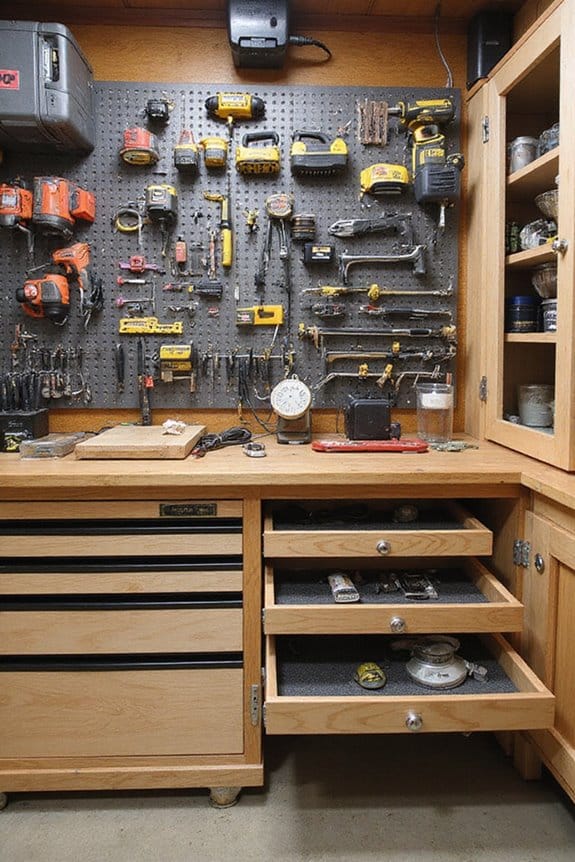Are expensive power tools worth the cost? Absolutely, in my experience. Here’s why: 1) They offer better performance with features like brushless motors for longer run times. 2) Their durability saves you money in the long run, as they withstand tough conditions. 3) Enhanced safety features, such as electric brakes, make work easier and smoother. So, while the upfront cost might sting a bit, it pays off. Stick around, and I’ll share more insights on making smart choices.
Key Takeaways
- Higher-end tools often feature advanced technology, like brushless motors, enhancing efficiency and reducing long-term operating costs.
- Durable materials and superior construction lead to increased longevity, making them a better investment over time.
- Premium tools typically include improved safety features, reducing the risk of accidents and enhancing user experience.
- Established brands offer robust warranties, indicating reliability and providing peace of mind for users.
- Enhanced productivity and reduced worker fatigue from quality tools can outweigh the initial higher purchase price.
Understanding Cost-Benefit Analysis for Power Tools
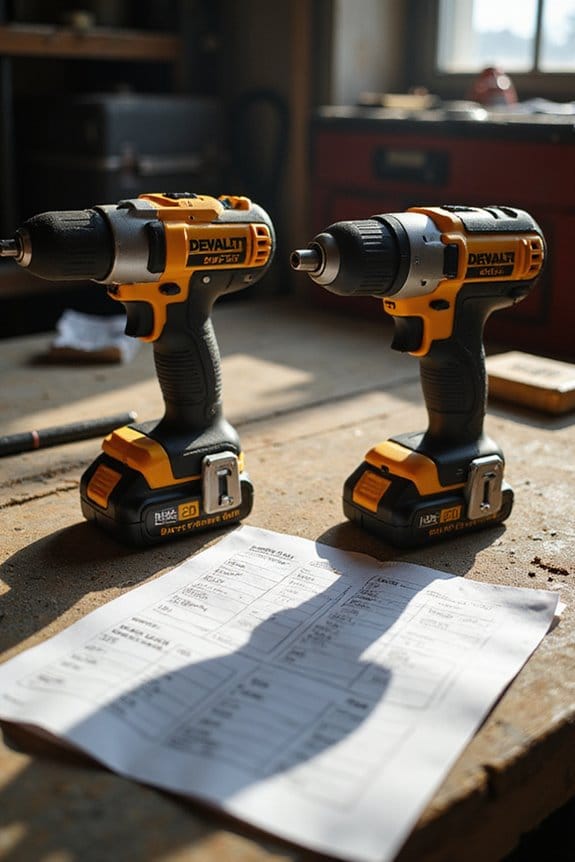
When you’re considering investing in power tools, understanding cost-benefit analysis (CBA) is essential. It’s like a financial GPS for your tool purchases! Here’s how to think about it:
- Cost Evaluation: Start with the upfront price, but don’t stop there. Factor in maintenance and operating costs too.
- Benefits: Consider potential gains like increased productivity and lower fatigue for workers. These can make a huge difference! Tools with adjustable speed settings can enhance efficiency and adapt to various tasks.
- Risks: Keep an eye on market fluctuations and tech advancements that could affect your tool’s lifespan.
Performance and Quality: The Case for Higher-End Tools
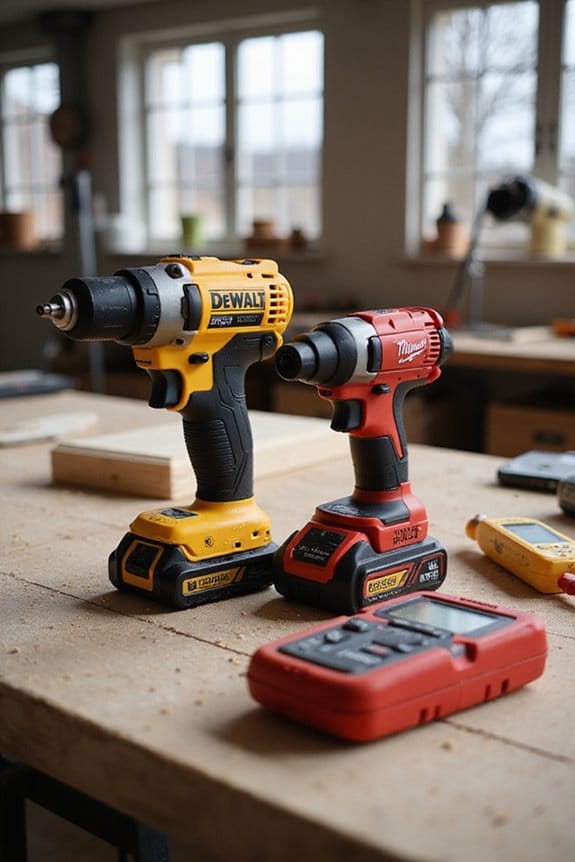
Investing in higher-end power tools isn’t just about spending more money; it’s about getting superior performance and quality that can truly make a difference on the job. Here’s why I think they’re worth it:
- Performance Enhancements: These tools often feature brushless motors and advanced battery management systems, giving you more efficiency and run time.
- Quality Craftsmanship: Made from durable materials, high-end tools resist wear and tear, ensuring they’ll last longer.
- Precision Control: With torque sensors and speed regulators, you get better control, reducing the risk of damaging your materials.
- Innovative Features: Tools like the DEWALT impact wrench offer impressive torque, making tough jobs feel like a breeze. Additionally, many of these tools come equipped with integrated LED lights to enhance visibility in dim work environments.
In short, if you want to elevate your work, these tools deliver!
Longevity and Durability: Investing for the Long Haul
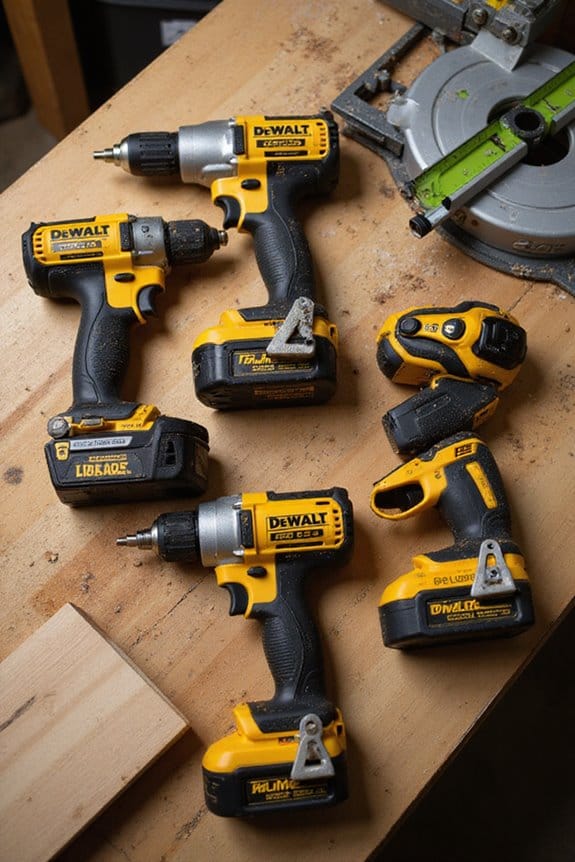
Power tools are like a trusty sidekick; you want them to be reliable and ready for action when you need them. Investing in high-quality tools typically means a longer tool lifespan. Here are some key points to evaluate:
- Material Quality: Durable metals and advanced components, like brushless motors, enhance longevity.
- Usage Impact: Frequent use can wear tools down faster, especially in harsh environments.
- Maintenance Practices: Regular cleaning and lubrication are essential. Following the manufacturer’s care guidelines can make a big difference. Additionally, tools made from high-strength alloys are known for their durability and resistance to wear, making them a wise investment for serious DIY enthusiasts.
Safety Features and User Experience in Power Tools
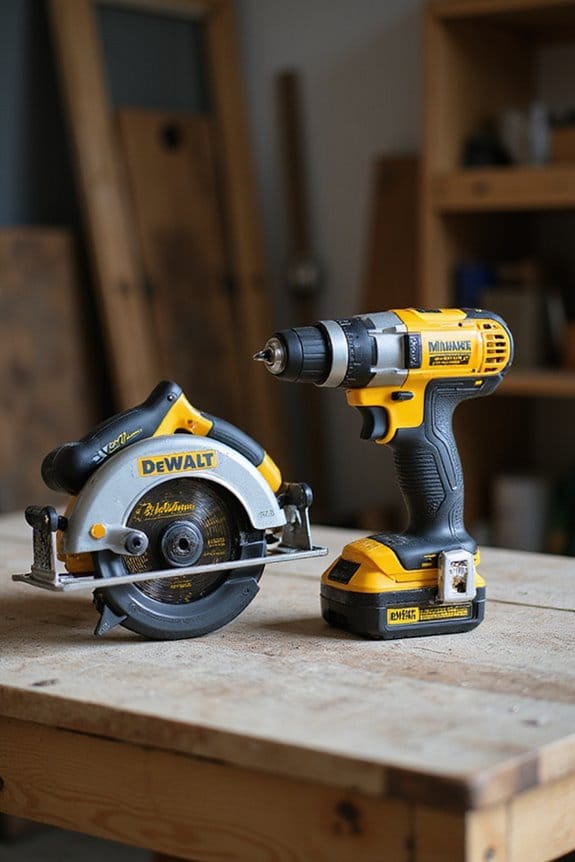
While it might seem like the latest power tool is just another gadget, the safety features and user experience can greatly impact how effectively I get the job done. Here’s why I think investing in expensive tools pays off:
- Safety Mechanisms: Premium tools often have better blade guards and electric brakes, reducing injury risks from accidental starts or kickbacks.
- User Ergonomics: Ergonomically designed tools minimize fatigue. If a tool feels good in my hands, I’m less likely to make mistakes.
- Intuitive Features: Easy-to-use safety mechanisms encourage consistent use. I appreciate tools that don’t require a degree in engineering to operate.
In the end, spending a little extra can lead to a safer, more enjoyable work experience. Trust me; your hands will thank you! Additionally, battery life and capacity in higher-end models typically offer longer run times, ensuring that I can work uninterrupted on my projects.
Eco-Friendly Options: Balancing Cost and Sustainability
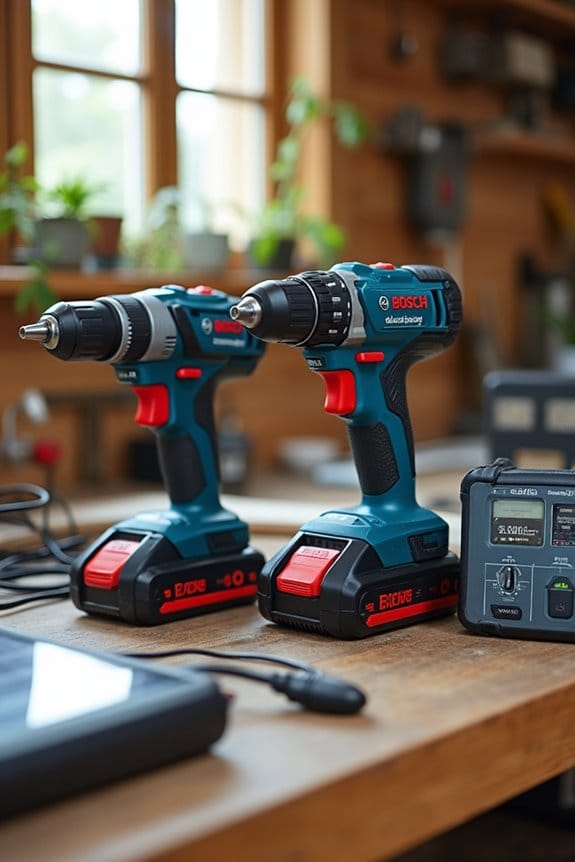
When you think about eco-friendly options, it’s easy to get lost in the idea that “green” means “expensive.” However, I’ve found that balancing cost and sustainability can lead to some smart choices, especially when it comes to power tools. Here’s what I’ve discovered:
- Eco-Friendly Materials: Many tools use biodegradable plastics and recycled metals. While these materials may cost more upfront, they often last longer and reduce waste.
- Sustainable Sourcing: It’s essential to evaluate suppliers for reliability, ensuring you get consistent quality.
- Long-Term Benefits: Sure, the initial price might sting, but eco-friendly tools can save you money in maintenance and energy costs over time. Plus, who wouldn’t want a lighter carbon footprint?
Practical Use Cases: Who Really Needs Expensive Tools?
Have you ever wondered who truly benefits from investing in expensive power tools? It’s often those in specialty trades. Here are a few groups that really need them:
- Construction Professionals: They rely on durable, efficient tools to meet tight deadlines and maintain quality.
- Automotive Technicians: Precision is key here. Expensive tools can make or break a repair job.
- Serious DIY Enthusiasts: If you’re tackling complex projects, high-quality tools can simplify your work and last longer.
- Renovators: They benefit from cordless tools that balance power with portability.
In these cases, the higher cost is a tool necessity. Investing in quality tools means fewer headaches down the road. Trust me, you’ll thank yourself later! Additionally, tools equipped with ergonomic designs can enhance user comfort and control, making them even more valuable for professionals and enthusiasts alike.
The Role of Brand Reputation and Warranty in Tool Investment
Investing in expensive power tools isn’t just about flashy features; it’s also about the trust you place in a brand and the security of a solid warranty. Here’s why brand reputation and warranty impact matter:
- Brand Loyalty: Companies like DeWalt and Milwaukee have earned consumer trust over decades, making them a safe bet for serious users.
- Warranty Coverage: A robust warranty—like Ridgid’s lifetime warranty—greatly reduces the risk of breakdowns, making it easier to justify your investment.
- Longevity: Tools backed by long warranties often signal higher quality, which can pay off in the long run.
In short, when you choose a reputable brand with a solid warranty, you’re not just buying a tool; you’re investing in peace of mind.
Market Trends and User Reviews: Making Informed Choices
Choosing the right power tools can feel a bit like maneuvering through a maze, especially with all the options available today. Here’s how to navigate market trends and user reviews to make informed choices:
- Market Growth: The U.S. power tool market is booming, expected to grow from $4.87 billion in 2025 to $7.61 billion by 2035.
- User Preferences: People now prefer tools that enhance efficiency and reduce strain. Ergonomic designs are winning hearts!
- Market Fluctuations: Sales might dip in 2025, but don’t get discouraged; the market will recover.
- Reviews Matter: Users often discuss the trade-offs between price, durability, and advanced features. High-cost tools can shine with their build quality, but only if they meet your needs.
Taking all this into account can help you choose wisely!
Frequently Asked Questions
How Do I Choose Between Brands of Expensive Power Tools?
Choosing between brands of expensive power tools feels like selecting a trusted knight for a quest. I prioritize brand reputation and tool performance, ensuring my champion won’t falter during battle but instead empower my endeavors.
Can I Find Financing Options for High-End Power Tools?
Absolutely, I’ve found various financing options for high-end power tools that help with tool affordability. Programs like buy now, pay later and rent-to-own make it easier to invest without overwhelming financial strain.
What Are the Best Practices for Maintaining Expensive Power Tools?
To keep my expensive power tools in top shape, I prioritize tool storage in a dry place and perform regular inspections. This helps me catch issues early, ensuring they last longer and perform better.
Are There Resale Values for High-End Power Tools?
Absolutely, high-end power tools can hold strong resale values in the market. I’ve noticed that while tool depreciation occurs, coveted brands often retain 50 to 70% of their original price, making them a smart investment.
How Do I Determine the Right Tool for My Specific Project?
When I determine the right tool for my project, I consider project requirements and match them with tool specifications. It’s essential to evaluate the tasks, materials, and frequency of use for the best results.

